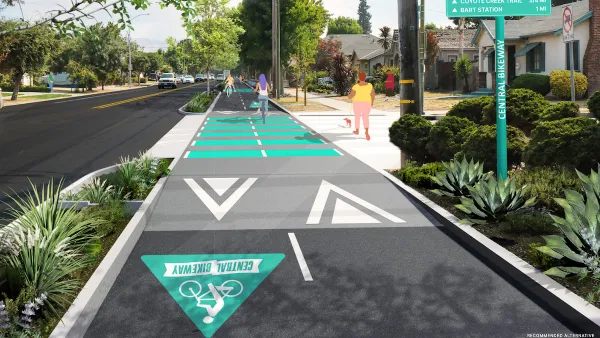Smaller, environmentally friendly homes -- ranging from as much as 1000 to as little as 70 square feet -- are a hot trend in modern architecture. Eco-conscious (and wallet-conscious) buyers are increasingly interested in these new "micro mansions".
"With rising energy costs and the scarcity of raw land, the era of the McMansion may slowly be coming to a close. In 2006 the average U.S. single-family home clocked in around 2,500 square feet, up nearly 50 percent from 28 years ago. And yet more residential architects report square footage in home design to be decreasing than increasing, according to a 2007 American Institute of Architects survey. That's only fitting as the size of the U.S. household continues to shrink: with 2.6 members under a roof today, the average has dropped two whole bodies in the last century. A handful of architects are betting that at least some of the singles, couples, and empty nesters who are clamoring for smaller, more efficient homes are ready for radical solutions, ranging from bread-box-size houses to entire neighborhoods tucked into what are often considered single lots.
"More people are looking at tiny homes as full-time residences," says Jay Shafer, owner of the Tumbleweed Tiny House Company, based in Sebastopol, California. "The way we live our lives has changed." Since 2000 the architect has been building homes as small as 70 square feet, many with green-certified lumber and gravity-fed plumbing. Just last year he toiled away on his designs solo; today he needs five full-time employees to help meet demand."
FULL STORY: Pocket Pads

Planetizen Federal Action Tracker
A weekly monitor of how Trump’s orders and actions are impacting planners and planning in America.

Silicon Valley ‘Bike Superhighway’ Awarded $14M State Grant
A Caltrans grant brings the 10-mile Central Bikeway project connecting Santa Clara and East San Jose closer to fruition.

Amtrak Cutting Jobs, Funding to High-Speed Rail
The agency plans to cut 10 percent of its workforce and has confirmed it will not fund new high-speed rail projects.

Planting for Change: How Trees Are Powering Climate Action
"Combating Climate Change with Trees" highlights how Southern California communities are strategically planting and nurturing urban forests to cool neighborhoods, improve air quality, and advance environmental justice.

Could Planners Adopt a 'Place Sherpa' Role?
Building upon the framework of a local housing panel, Chuck Wolfe suggests that advocacy and policy discussions would be enhanced by a “sherpa mindset” that focuses on lived experiences, facilitates applied knowledge of urban places, and promotes stakeholder discussion.

California Advances Its 30x30 Conservation Goals
California is making significant progress toward its 30x30 conservation goals, but looming federal rollbacks and gaps in biodiversity protections could threaten the state’s efforts to protect lands and coastal waters by 2030.
Urban Design for Planners 1: Software Tools
This six-course series explores essential urban design concepts using open source software and equips planners with the tools they need to participate fully in the urban design process.
Planning for Universal Design
Learn the tools for implementing Universal Design in planning regulations.
Caltrans
City of Fort Worth
Mpact (founded as Rail~Volution)
City of Camden Redevelopment Agency
City of Astoria
City of Portland
City of Laramie


























